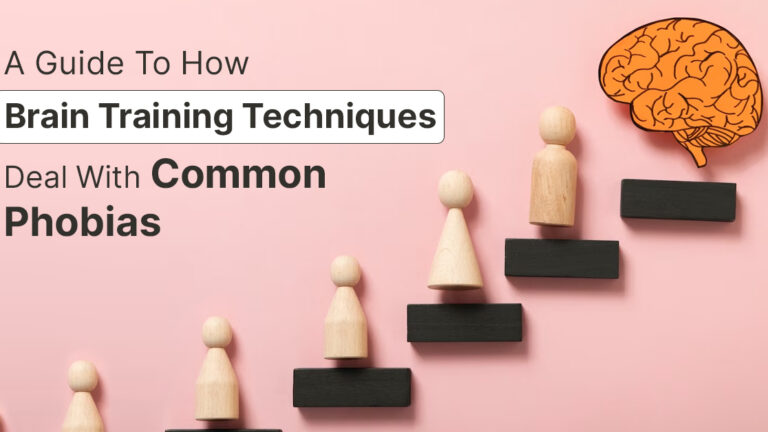Phobias are more than irrational fears as they directly impact an individual’s mental well-being and daily activities. Any phobias, be it the fear of spiders, height, or public speaking, can limit individuals from their career growth, social communication, and happiness. However, there are many conventional therapies to treat these phobias, one of the contemporary methods that is gaining popularity is the brain or memory improvement techniques. Hence, this blog will explore the essential brain training techniques to deal with common phobias.
Understanding Common Phobias:
The common phobias predominantly seen in many are acrophobia, social phobia, and arachnophobia, characterized by intense fear and reactions. These phobias make individuals refrain from society, allowing them to miss out the experience, career growth, and various other opportunities. Hence, to address phobias, one of the effective ways is to train the brain in how it responds to the trigger.
Brain Training Techniques for Phobia Management
Cognitive Behavioral Therapy (CBT)
CBT, or Cognitive Behavioral Therapy, is the predominantly used therapy to treat phobias. The primary focus of this therapy is to identify the most complicated and challenging beliefs and thoughts associated with the phobia. Also, this brain training therapy helps individuals to reframe themselves from negative thoughts and replace them with positive ones. Moreover, individuals can respond to fear by gradually exposing them to a phobic stimulus in a controlled environment. In addition, this therapy is also a part of ADHD treatment in Chennai to strengthen behaviors of the child such as staying focused.
Virtual Reality Exposure Therapy (VRET)
Virtual Reality Exposure Therapy is a cutting-edge brain training technique that immerses individuals in virtual environments designed to simulate their phobia triggers. VRET allows patients to confront their fears safely and controlled, gradually reducing their anxiety response. This technique is particularly effective for phobias like fear of flying or fear of public speaking, where real-life exposure may be challenging.
Mindfulness Meditation
Mindful meditation is one of the brain training techniques that allows individuals to respond to the current situation without judgment. So, individuals with phobias can manage their stress and anxiety through effective mindfulness training. Also, by practicing mindful meditation, individuals with phobia can optimize their emotions and thoughts associated with phobic stimuli.
Hypnotherapy
Hypnotherapy is another brain training method that allows individuals with phobias to access their subconscious mind through guided suggestion and relaxation. This method allows you to understand the root cause behind the phobia stimulation and reprogrammes the mind as per the phobic stimulation.
Common phobias can profoundly impact an individual’s quality of life, but brain training techniques offer a promising avenue for overcoming these fears. Whether it’s through cognitive behavioral therapy, virtual reality exposure therapy, mindfulness meditation, or hypnotherapy, various tools are available to help individuals rewire their brains and manage their phobias effectively.
It’s essential to remember that overcoming a phobia may require time and patience. Seek professional guidance to determine which brain training technique best suits your specific phobia and individual needs. With dedication and the right approach, you can conquer your fears and enjoy a life free from the limitations imposed by common phobias.




